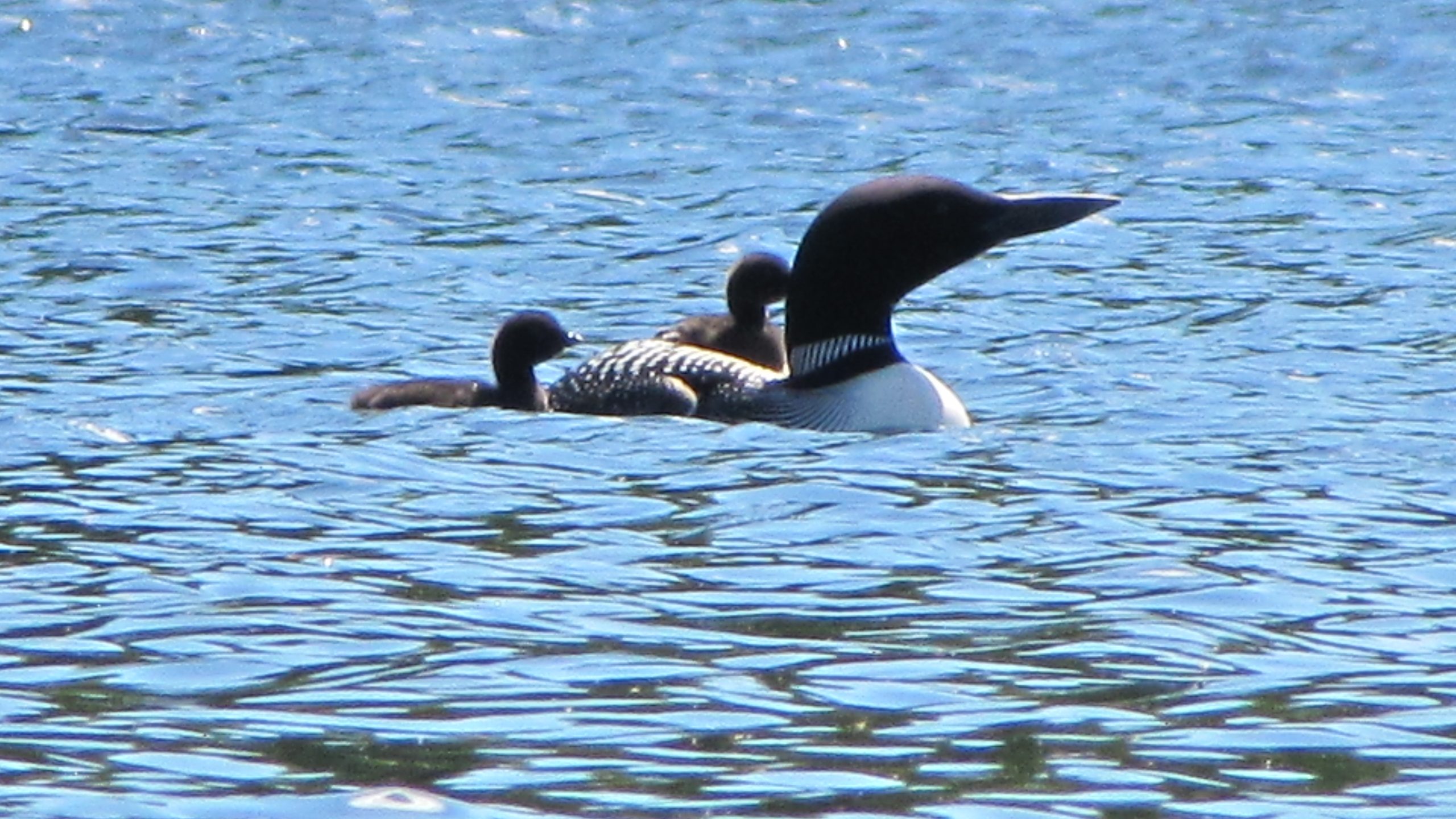
On June 27, after approximately 28 days of nesting, two fuzzy light brown loon chicks arrived on Highland Lake. Because the nest is on the very edge of shore, the chicks tumble into the water and swim shortly after hatching. This year they seemed to hatch just hours apart. It is not uncommon for the second chick to arrive a day after the first.
Loons are egalitarian mates. Our adults and chicks spent more than a week near the nesting site, taking turns fishing for minnows, feeding the chicks, carrying them on their backs and under their wings. After dark, they usually huddle together under the cover of overhanging bushes along the shore.
On June 6, a team of loon biologists from the New Hampshire Loon Preservation Committee came to Highland Lake after dark to band the adults. One of our adults was banded in 2011. This loon turns out to be the male. He received new leg bands matching the original: his left leg has a green stripe over a solid green and his right leg has a blue stripe over silver.
The female, who was never banded, now has a yellow stripe over a red band on her left leg and a blue stripe over silver on her right. The biologists also noted that one chick is markedly smaller than the other, which is concerning but not uncommon. Blood samples were also taken.
As I write this update, our chicks are 18 days old and growing. Both are actively swimming and “diving” – more like dipping underwater for 15 seconds or more. They have spent many days at the northern cove where it is quiet and safe from speed boats.

At this time, they are moving all around the lake. At least one adult is always tending them. They remain vulnerable.
A lake resident reported on July 14, “An eagle swooped down on them twice, with much noise and flapping on the part of the loons.” Eagles are nesting on Webster Lake. They have a strong presence in the lake region, and they will feed on loon chicks.
We can only hope that our two chicks, affectionately named Tuft and Tumble by photographer Ally Resch, will remain safe under the protection of their parents.
It is important that human approach towards the loons keep a 150-foot distance. We wouldn’t want to distract the adults from keeping their attention on other threats, such as an eagle swooping from above.
Loons will, however, swim close to humans if you are on the shore or sitting still in a boat. It truly is a joy to have the opportunity to observe them.
In the weeks ahead, providing that they remain protected and healthy, we will see the chicks learn more and more skills. Soon they will be too big to climb on top of their parents’ backs.
Finally, I received the following from Kaila Hodges, Outreach Intern at the Loon Preservation Committee:
Save a Loon! Turn In Lead Fishing Tackle.
Lead poisoning, resulting from the ingestion of lead fishing tackle, is by far the largest known killer of adult loons in the state and has been responsible for over 40% of documented adult loon mortalities in New Hampshire since 1989.
Lead sinkers and lead-headed jigs weighing one ounce or less (the sizes most often ingested by loons) have been illegal for sale and freshwater use in New Hampshire since 2016.
You can get cash for your old lead by participating in the Loon Preservation Committee’s Lead Tackle Buyback program. Lead tackle can be turned in at participating retailers. Visit Loon.org/loonsafe for more details.